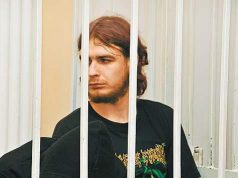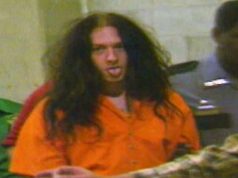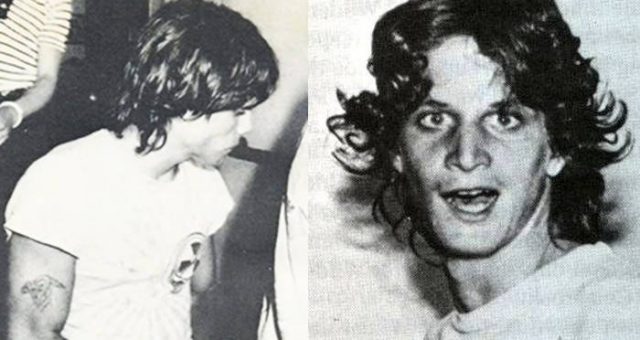
“Say you love Satan.” A phrase that is worth a title, a story, an era. The black episode that we are going to examine represents a sort of encyclopaedia of the macabre. The prototype of the macabre. In fact, all the elements characterizing the most ferocious and bloody stories of crime concur in the events described above: a particularly brutal and violent murder, acid Satanism, drugs, music, a lost and drifting youth and the United States of America as an incomparable backdrop to the entire story. Serial killer? No, not at all. It doesn’t matter: we are in the presence of Evil made person. Evil disguised as seventeen years old boy. This is the story of Ricky Kasso.
Who is Ricky Kasso?
Richard Allan “Ricky” Kasso Jr. was born on March 29, 1967 in Huntington, Suffolk County, State of New York (USA). His mother is a history teacher, his father trains the local football team at Cold Spring Harbor High School. A normal family, you might say. A typical American family. Yet, from a very young age, Richard showed a total intolerance towards society, institutions, the family itself. It’s the classic black sheep. Lost, irrecoverable. A sociopath. The stereotype of the sociopath. His relationship with his parents is anything but idyllic: he is often kicked out of the house. He sleeps where he can: in cars, on the street, at friends’ houses, in garages, in the woods. As a background to the stormy adolescence of Ricky, the town of Northport, New York.
He’s a football fan, but sports and a healthy life no longer belong to him. He approaches drugs: from marijuana to hashish, from phencyclidine – or PCP – to the much better known and more widespread Lysergsäurediethylamid, the notorious LSD. Hallucinogens. Drugs, in the United States between the ’70s and the early ’80s, circulates in abnormal quantities: mountains of drugs, rivers of drugs invade every suburb, every stars and stripes town, from the East Coast to the West Coast. On the border between degenerate and deadly high and existential terminus, thousands of young people seek refuge in drugs. Among them is Ricky Kasso Jr.
The Abyss of Acid Satanism
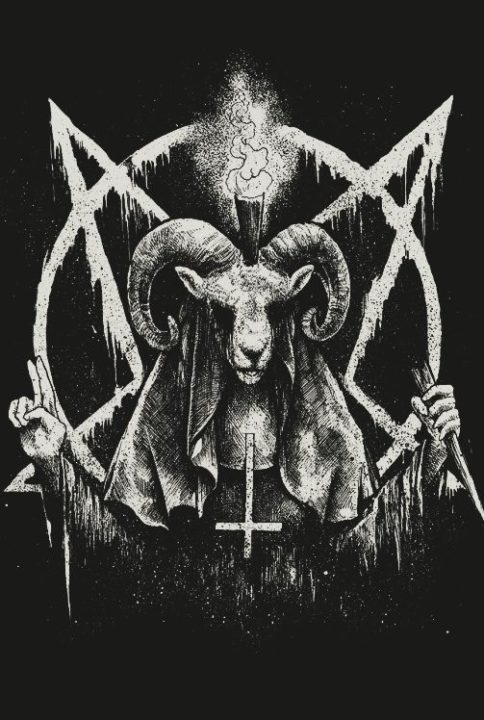
Friends and acquaintances describe Ricky as a complicated and particular guy – undoubtedly difficult – since childhood. Drugs, but not only. In fact, two other elements mark Ricky Kasso’s adolescence and the whole story related to this boy: music and Satanism. Black Sabbath, led by the charismatic leader Ozzy Osbourne, AC/DC, Judas Priest above all. More generally, Ricky suffers the hypnotic fascination of rock and heavy metal groups whose image and lyrics include more or less explicit references to the occult, to the Devil, to Satanism, to black magic, to nihilism, to drugs and their effects, to rebellion, to the eradication and subversion of rules and social and cultural conventions. Themes that Ricky embraces to the point of turning them into a reason for living.
At 17, Ricky Kasso is a young man no longer standing on the precipice, but in the precipice. Physically weakened by the compulsive use of drugs and alcohol, psychologically – using vulgar and improper terminology but undoubtedly effective – compromised. What we could bluntly define as a drifter. Wild hair, “possessed” look.
It is at this stage that Ricky joins a group of young Satanists, the so-called “Knights of the Black Circle“. Acid Satanism – “Acidism” – to the Nth degree. The group – whose glue is not only acid Satanism but also the use and sale of drugs – is committed to the desecration of graves and the celebration of black masses during which appears the typical as well as recurrent and inflated symbology found on such occasions: inverted crosses, pentacles, the inevitable 666. The activities of the group are surrounded by the town of Northport. It seems that Ricky, once, shouted in public “Hail Satan!”. Ricky’s Satanist fame is strengthened day by day. For Ricky, calling himself a Satanist is a source of pride. He talks to his friends, tells them about demonic visions and how the Devil communicates with him. He cites Anton LaVey – founder of the Church of Satan – and his work, “The Satanic Bible”. Satanism becomes Ricky’s second drug: the Devil as a true addiction as a synthetic drug.
He tells of having celebrated, together with the other members of the so-called “Knights of the Black Circle” group, a Walpurgisnacht (the Night of Walpurga, a pagan feast typical of the Germanic peoples, held on the night between the 30th of April and the 1st of May) in the famous and notorious house of Amityville – a town situated in the County of Suffolk, New York – at 112 Ocean Avenue. Inside this characteristic Dutch-style colonial building, as is well known, the massacre of the DeFeo family took place at the hands of their son, Ronald “Butch” DeFeo Jr. It was 1974.
This episode is closely linked to his stay at the Amityville Psychiatric Hospital. The parents, in fact, in a last desperate attempt to recover their son, take Ricky to the South Oaks Psychiatric Hospital, also known as Amityville Asylum. Ricky, despite his young age, proves to be a skillful impostor and simulator. Initially, as told later, he introduces himself to the doctors for what he really is: a worshipper of Satan. But then, in order to get out, he manages to persuade the doctors: he promises to go back to school, to abandon Satanism. And he denies Satanism. Young and convincing, Ricky leaves the hospital. The disruptive parable of Richard’s existence, however, is only at the beginning.
Ricky Kasso is arrested for desecrating graves. The police, in fact, surprise him as he is desecrating a grave in a local colonial cemetery. Richard is only 16 years old. About a month passes and Ricky falls ill with pneumonia. He is admitted to the Long Island Jewish Hospital. However, his parents try to take advantage of the unexpected illness in order to prolong his stay and offer his son adequate psychiatric care. But doctors, almost unbelievably, do not notice any particular and dangerous psychotic or sociopathic tendencies in Ricky. “Asocial” is the diagnosis. Once pneumonia is cured, Richard is discharged.
His troubled relationship with his parents deteriorates even further, although Richard never goes so far as to hate his family. His anger at his loved ones lies in one cause only: his alleged “madness”. Ricky lets off steam with his friends, who are also part of that drug addicted and drifting youth; he tells them that he isn’t crazy, he doesn’t think as himself as crazy. In fact, Ricky is not crazy, in the common sense of the term: he is capable of understanding and wanting.
It is said that Ricky wrote a song, in a particularly rebellious phase, entitled “A Child Of The Devil”. Between the joke and the macabre, Ricky pours ketchup on his wrists, pretending to have cut his veins. He bursts into mocking and mocking laughter when his understandably worried mother discovers it’s just tomato sauce. As a sign of challenge, he warns his parents when he leaves to go out and get some “mesc” (short for Mescaline a hallucinogenic and narcotic alkaloid), also adding a mocking “I’ll be back for dinner”.
The evening before the hearing in court – the reference is to the trial following the desecration of the tomb – he sleep at a friend’s house. In the morning, the boy goes home but his father prevents him from taking a shower and having breakfast. In fact, he doesn’t even let him into the house. Together they go to court. Then, at the end of the hearing, the father leaves the boy in front of a shop, the Midway store. Ricky asks his father for breakfast money: no answer. The boy then starts kicking his father’s Corvette. His father starts the engine and leaves. He returns half an hour later: he gives Ricky a few dollars and finally orders him not to call home and not to talk to the other three sisters. We reach the breaking point.
Gary Lauwers
Drugs are the equivalent of degradation, in all its many forms. The murder of Gary Lauwers is part of a scenario in which it is first of all the drug – and secondly, that acid Satanism constantly at arm’s length with the world of drugs – that dictates the times and rhythms of the descent into an imponderable abyss. Consumption, dealing, money, debts, stolen drugs, youth rivalries. Ricky’s circle of friends – or alleged friends – is as unhealthy as Ricky himself. Above all, James Troiano, 18 years old. Orphan, adopted, leaves school at a young age, is a drug addict. He goes in and out of jail: thefts, above all. He loves to break the rules, like Ricky does. And then there’s Gary Lauwers, 17, also a drifter. Drug addict, a good boy turned into a little devil. He wants to do business and make money dealing cocaine but, at the same time, he wants to go back to school and abandon the unruly life of drugs and streets.
Ricky Kasso and Gary Lauwers are anything but friends. On the contrary, we can say that the two compete for territory and prestige. Both, in fact, consider themselves leaders. The disagreements between Ricky and Gary arise from “drug deals”. Lauwers, in fact, had taken some doses of PCP from Kasso. Drugs and money, then. The two of them face each other several times, repeatedly fighting. And it’s always Gary who get beaten up. The latter, finally, pays off the debt, returning the money to Ricky: 50 Dollars, perhaps 100. The epilogue, however, stands out on the threatening horizon.
One evening, Kasso and the others find themselves in Cow Harbor Park, Northport. Among those present, Lauwers, James Troiano and Albert Quinones, 16 years old, another drug addict boy belonging to the small circle “captained” by Kasso. Later, the group heads towards the so-called Aztakea Woods. The tension begins inexorably to rise. The boys want to light a fire: Gary, to revive the flame, uses his socks, then the sleeves of the jacket. Ricky Kasso teases and provokes his opponent by saying: “why don’t you burn the whole jacket?”. Between insults and provocations, the boys begin to consume drugs: PCP, LSD, mistakenly confused by themselves for Mescaline. It’s dark, it’s night. Suddenly, Gary exclaims, “I have funny vibes that you’re going to kill me”. Ricky replied, “I’m not going to kill you. Are you crazy?”. Actually Ricky Kasso lies: he’s going to kill Gary Lauwers.
The murder of Gary Lauwers
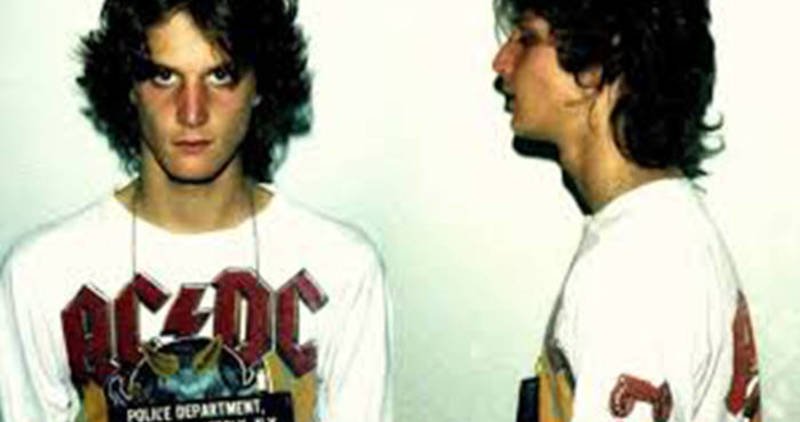
Quinones, though prey to powerful hallucinogens, attends the scene. “A trip”, as he himself defines it. Ricky and Gary start to beat each other up. The first, then, bites Gary in the neck and ear. Ricky then stabs Gary. The situation precipitates.
Gary tries to escape, in vain. Meanwhile, Trojan collects the knife with which Kasso has just wounded Lauwers. The two go to the battered rival. Kasso and Troiano make Lauwers kneel, then Ricky marks the fateful words: “Say you love Satan”. But Gary replies: “I love my mother”.
The stabs follow one another, incessant, deadly. The violence with which Ricky inflicts on Gary Lauwers’ meat is incredible. They will count between 17 and 36 stabs, blades that tear through the abdomen, chest, face, eyes. Gary Lauwers’ agony lasts for a few hours: three, maybe four. The corpse of the teenager will be covered with leaves and branches. It is June 16, 1984.
Ricky Kasso returns to his life: friends, drugs, music, Satanism, the streets of Northport. As if nothing had happened. But he is a centralist, Ricky, with a charismatic and unhealthy ego. He tells his friends what happened, bragging about his murderous undertaking. A human sacrifice, according to Kasso, directly inspired by Satan. Satan himself, as Kasso recounts, would manifest himself in the moments immediately following the murder of Lauwers: Kasso hears a black crow cawing, a direct and tangible testimony – according to Kasso – of Satan’s presence.
Kasso, as said, tells his friends about the murder. Thus begins a macabre pilgrimage to the site of the crime: it shows them the decaying body of Lauwers. Kasso and Troiano will later bury Gary Lauwers’ corpse in a shallow grave.
The rumors inevitably spread in Northport. A wall of silence, in these cases, is the most powerful wall that a certain community can erect to keep away curious people and strangers. But, just as inevitably, rumours spread, they cross the wall of silence and here an anonymous complaint shakes the unsuspecting community of Northport. In fact, in Northport and the surrounding cities, the population had been aware of this fact for weeks. An episode still not very much in focus, but already on everyone’s lips.
The suicide of Ricky Kasso
On July 1, 1984, an anonymous report arrived in the police offices. On July 4, the officers discovered the mutilated and advanced decaying corpse of Gary Lauwers. The bones and shreds of flesh show evident signs of stab wounds. The crime scene and the testimonies collected offer the investigators a sufficiently clear and unequivocal picture. All clues lead to Ricky Kasso and James Troiano.
Ricky Kasso was arrested on July 5, 1984. Together with Kasso and Troiano, Albert Quinones is also arrested, who helplessly witnesses the murder of Gary Lauwers. His testimony (in exchange for immunity), however, is considered – perhaps erroneously – unreliable because, that night, under the effect of hallucinogens. In April 1985, despite the fact that the statements of Quinones appear rather plausible and compatible with what really happened, James Troiano will be acquitted of the charge of second-degree murder.
Ricky Kasso, arrested, was taken to his cell. Perhaps out of shame, perhaps because of excessive psychological pressure or, more simply, in a final, blatant act of rebellion mixed with human sacrifice in honor of that Satan so revered in life, he committed suicide on July 7, 1984, in Riverhead, New York. He was just 17 years old.
The media coverage of Ricky Kasso’s bloodshed reverberates with enormous momentum throughout the United States of America. Ricky Kasso soon became a macabre symbol.
The “myth” of “Acid King” was born. It will also be renamed the “Say You Love Satan Killer”. Music, drugs, Satanism, a brutal murder, the murderer who, at the time of arrest, wears an AC/DC T-Shirt: the “inquisitorial” press is waiting for nothing else and instead of lucidly analyzing the intricate events, instead of looking for the real reasons for the crime, blames only and exclusively rock music. These are years in which rock and metal music are the subject of a particularly vehement defamatory campaign, on the verge of paranoid. Moreover, phobia breaks out for the satanic cults: “Satanic Panic”, using the expression used in that period.
The murder of Gary Lauwers by Ricky Kasso and James “Jimmy” Troiano inspires films, books, songs, documentaries, T-Shirts, indicative examples of how a crime and its creator can become an integral part of popular culture.
The San Francisco metal group, Acid King, for example, owes its name to the nickname Ricky Kasso. Acid King, with clear reference to the hallucinogens of which he was a great consumer. Even the famous and irresistible “Teenage Dirtbag” by Wheatus is inspired by the story of Ricky Kasso. The frontman of the group, Brandan B. Brown, is originally from Northport and was 11 years old at the time. Even more emblematic is the lyrics of the song “Psychedelic Sacrifice” by the band The Electric Hellfire Club:
They say the Devil is alive and well
In Northport, Long Island
A sleepy town turned upside down
By a little Satanic violence
Ricky was the Acid King
A heavy metal fan
Leader of the Knights of the Black Circle
Satan’s Left-Hand Man
A bunch of teenage loners
Looking for some thrills
Fucked-up, drug-crazed stoners
On the highway to Hell
Drugs, death and the Devil
A psychedelic sacrifice
For the love of Satan
Someone had to pay the price
They took him down to the killing ground
Where no one could hear his cries
Screaming for his mama
While Ricky tore out his eyes
Say you love Satan
All the drugs you’ve taken
Were a sacrament in his name
Say you love Satan
Claim him as your savior
Let yourself go insane
Ricky was the Acid King
He said that he could do anything
In a prison cell between heaven and Hell
He made the angels sing
Drugs, death and the Devil
You will never understand
A psychedelic sacrifice
Because Satan is my main man!
Say you love Satan
All the drugs you’ve taken
Were a sacrament in his name
Say you love Satan
Claim him as your savior
Let yourself go insane
Over the decades, the story of Ricky Kasso Jr. has gone waning. But, at the criminological level, the legacy of those bloddy events is still alive and deserving of the strongest attention. The murder of Gary Lauwers is and will remain an unpunished crime: Kasso takes his life in prison before the trial, Quinones decides to testify in exchange for immunity, Trojan – considered unreliable the testimony of Quinones – will be acquitted. No one guilty according to the US justice.
Beyond the serious and macroscopic judicial flaw, Ricky Kasso identifies an era, a precise historical moment, the supreme expression of a cursed youth. His face is marked, his gaze almost lost in nothingness, his eyes recessed, we could say spiralled, his hands forced by the handcuffs, that verse – a graying “Aaaaah” – to mock brave photographers and the press as they gather at the entrance to the police station, a half mocking smile, and finally a movement with his head to move his long hair away from his forehead: iconic images of a young devil. USA, 1984.
Photo credit: https://people.howstuffworks.com/satanism5.htm




